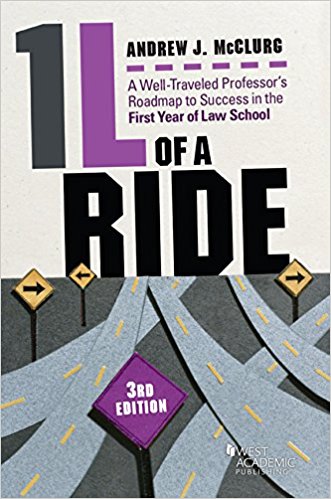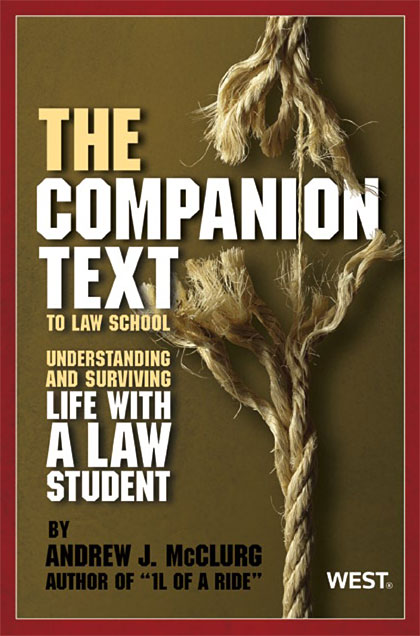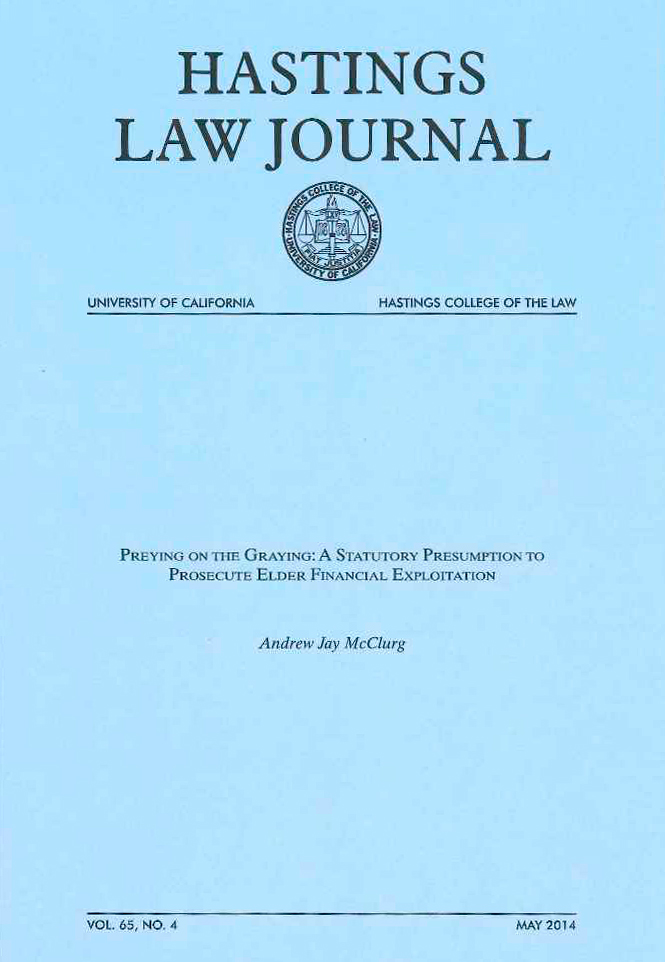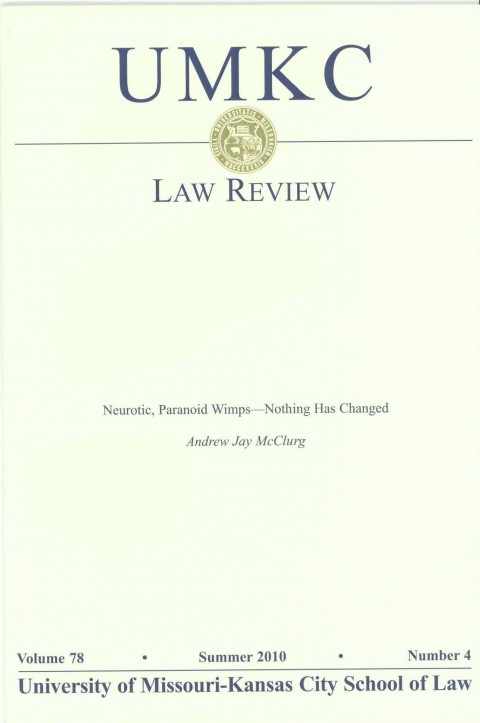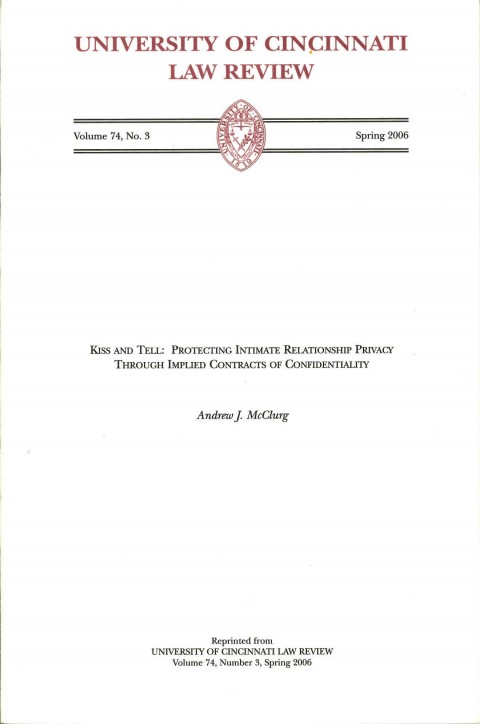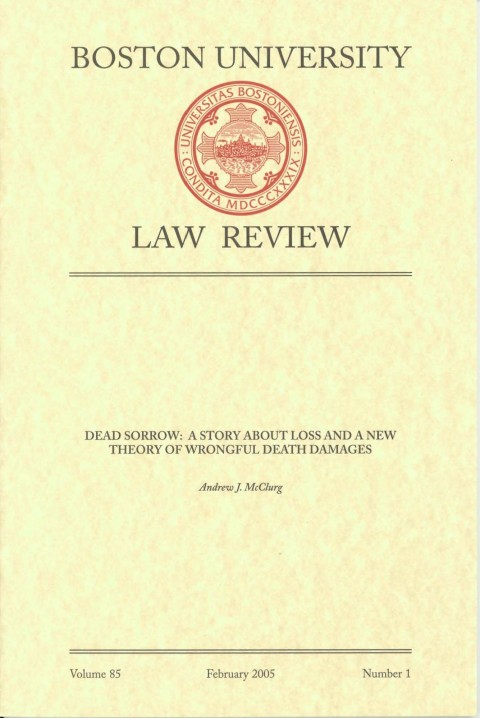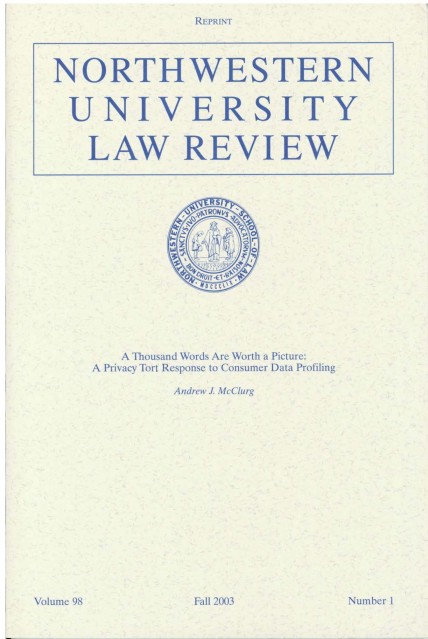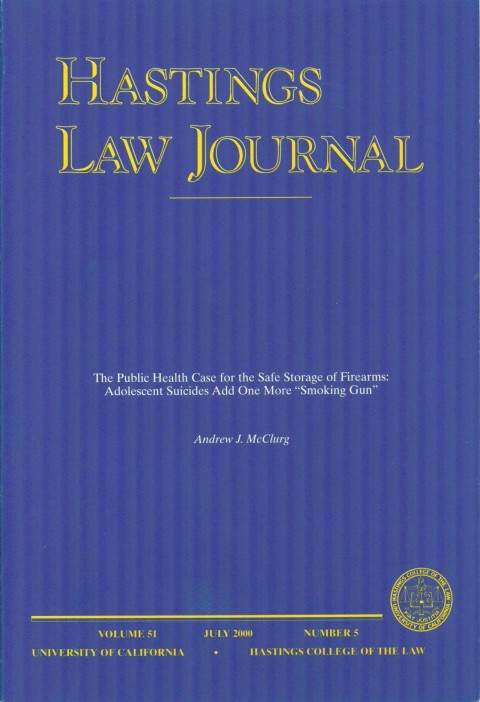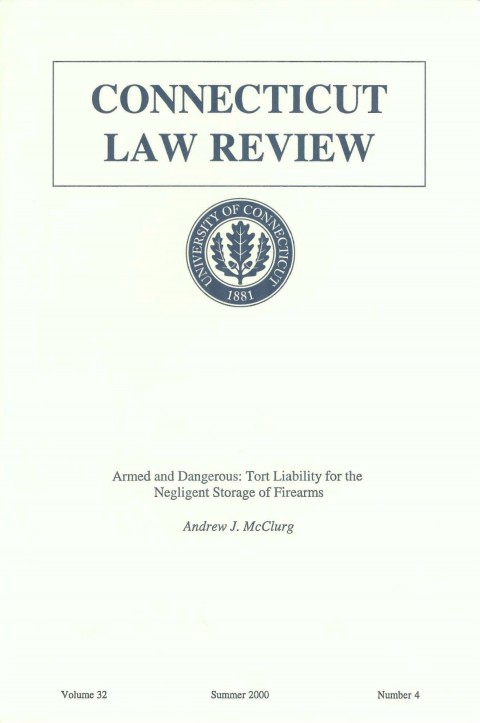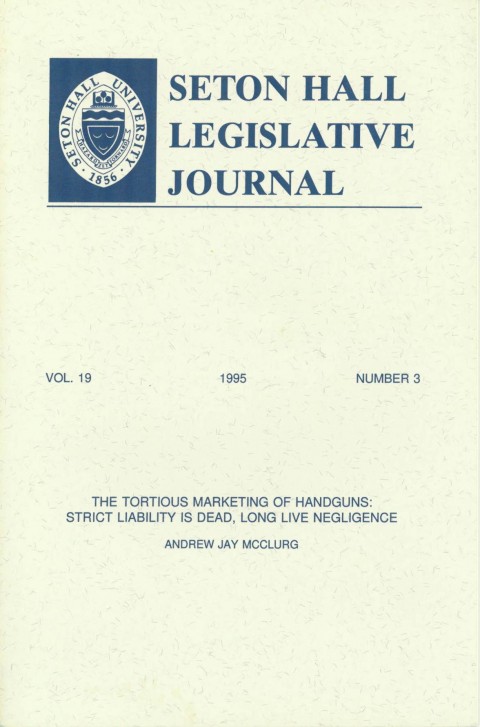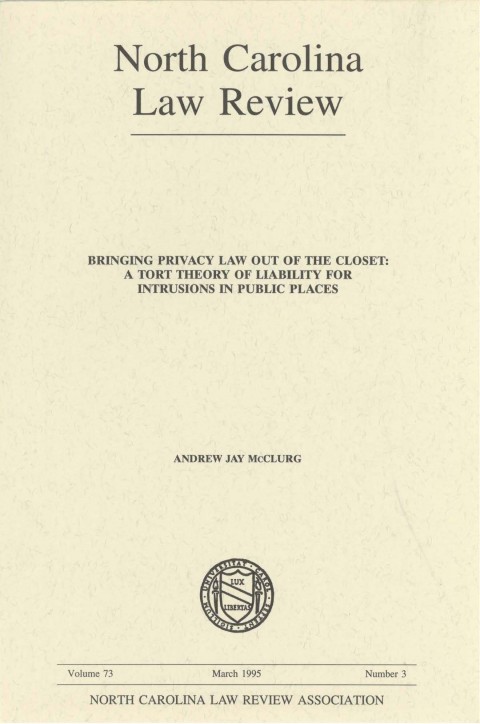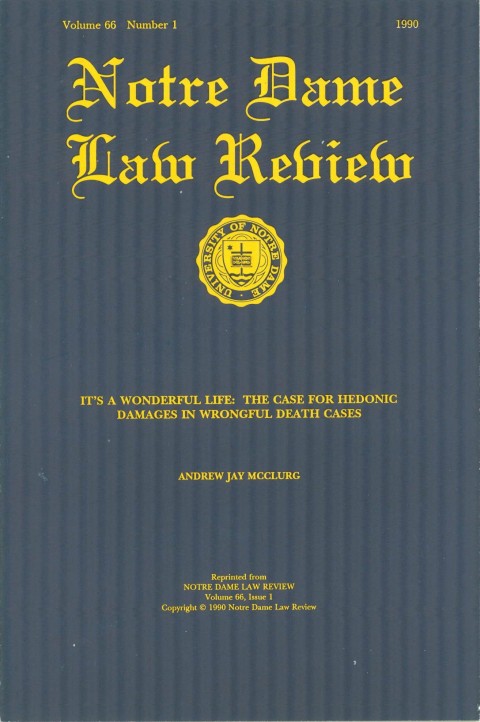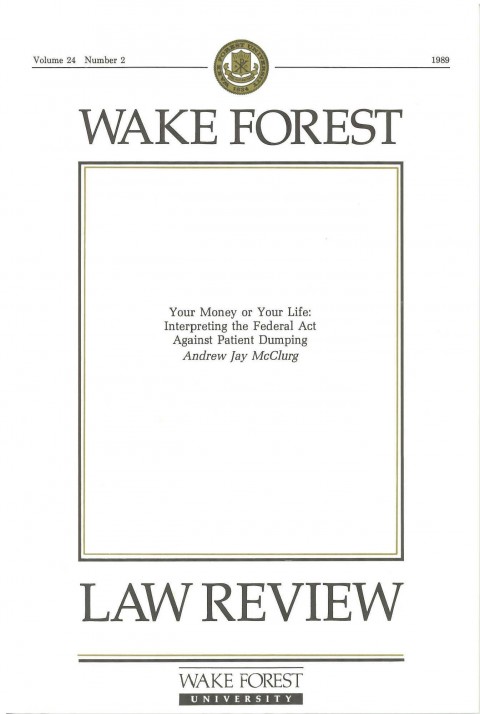June 25th, 2022 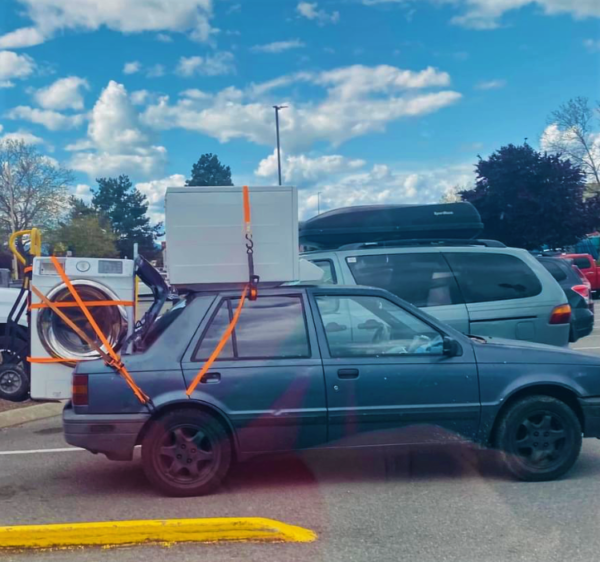 At lawhaha.com, we love what we call “rolling torts,” also known as “accidents waiting to happen.” A rolling tort consists of an effort to move large objects via a vehicle in a way that creates an unreasonable danger to other motorists. At lawhaha.com, we love what we call “rolling torts,” also known as “accidents waiting to happen.” A rolling tort consists of an effort to move large objects via a vehicle in a way that creates an unreasonable danger to other motorists.
Courtesy of a former student, here we find a valiant effort to transport a full-size washer and dryer with a compact car. To the driver’s credit, the elaborate straps show a solid effort to arrive at the destination without disaster.
More rolling torts can be found scattered through these pages, including here, here, and here.
April 10th, 2019 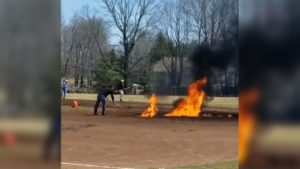 People frequently ask me, What makes for a good lawyer? “Problem-solving skills” is the first answer that comes to mind. Do you possess them? Take this test and see. People frequently ask me, What makes for a good lawyer? “Problem-solving skills” is the first answer that comes to mind. Do you possess them? Take this test and see.
Problem: A high school baseball game is scheduled. Unfortunately, the field is wet from heavy rain. How do you solve this problem?
Answer choices:
(a) Play the game on the wet field because what’s the big deal with that?
(b) Recognizing that a wet field risks injury to players, make your best efforts to squeegee off or soak up the water.
(c) Recognizing that (b) would be too much freaking work, cancel the game and reschedule it for when the field is dry.
(d) Pour 24 gallons of gasoline on the field and set the damn thing on fire.
(d) was the choice made at a high school baseball field in Connecticut, turning the field into a toxic mess that will cost an estimated $50,000 to clean up. The town posted the news on its Facebook page, generously taking responsibility for the incident: “A poor decision was made … to ‘dry the field quicker’ and 24 gallons of gasoline was poured and set on fire.”
If you picked (d), congratulations! You should avoid law school (please), but have potentially positioned yourself to be an influencer for a major oil company.
September 17th, 2017 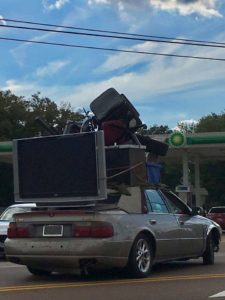 A rolling tort doubling as a mobile movie theater. “Rolling Torts” is the label Lawhaha gives to overloaded vehicles presenting dangers on America’s roads and highways. They’re everywhere. On the one hand, you have to admire the ingenuity and ability of people to load moving-truck sized packages onto ordinary passenger vehicles. On the other hand, if one of these items breaks loose, especially on a highway, the risk to other drivers and passengers is severe.
 (Of course, technically speaking, “Spot the Tort” entries are actually potential torts. An actual tort doesn’t occur until the risk manifests itself in injury.) (Of course, technically speaking, “Spot the Tort” entries are actually potential torts. An actual tort doesn’t occur until the risk manifests itself in injury.)
August 6th, 2017 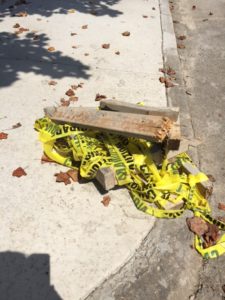 Last week I posted the reverse of this post, Non-Tortious Neighbors Are Good Neighbors, then I came upon this spikey little trap. As you can see, it’s right on the sidewalk. Last week I posted the reverse of this post, Non-Tortious Neighbors Are Good Neighbors, then I came upon this spikey little trap. As you can see, it’s right on the sidewalk.
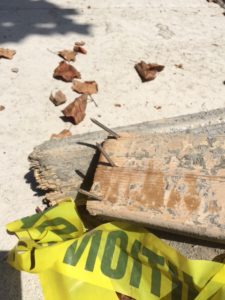 I’m no expert, but I think the caution tape is supposed go around the hazard, not beneath. And could you at least point the long rusty nails in the pedestrians’ direct path down? I’m no expert, but I think the caution tape is supposed go around the hazard, not beneath. And could you at least point the long rusty nails in the pedestrians’ direct path down?
July 23rd, 2017  Do you ever take strolls around your neighborhood and find yourself appalled by the risky, tortious conditions residents leave on the sidewalks in front of their homes. A couple weeks ago I passed a house with a pile of boards spilling onto the sidewalk bearing long, upward-turned rusty nails sticking out. It’s a popular neighborhood where people like to walk, including at night. I was tempted to knock on the door and explain duties of care and premises liability, but only had an hour, so instead just moved the worst offending boards off the sidewalk. Do you ever take strolls around your neighborhood and find yourself appalled by the risky, tortious conditions residents leave on the sidewalks in front of their homes. A couple weeks ago I passed a house with a pile of boards spilling onto the sidewalk bearing long, upward-turned rusty nails sticking out. It’s a popular neighborhood where people like to walk, including at night. I was tempted to knock on the door and explain duties of care and premises liability, but only had an hour, so instead just moved the worst offending boards off the sidewalk.
Then a couple days ago I came upon my new favorite neighbor’s house. This is a thing of beauty. Look at the reasonable care they exercised to protect sidewalk travelers, so awesome it earns Tortman’s Good Neighbor of the Month Award. I would not be shocked if a lawyer lives there.
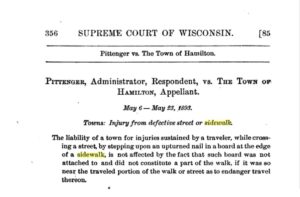 But you might be thinking, “Oh, Tortman, you’re lost in law professor land. You worry too much. People don’t really step on rusty nails on the sidewalk and sue people.” In rebuttal, I refer you to Pittenger v. The Town of Hamilton, decided by the Wisconsin Supreme Court in 1833. The court held for a plaintiff injured by an upturned nail in a board left next to a sidewalk because “it was so near the traveled portion of the walk or street as to endanger travel thereon.” But you might be thinking, “Oh, Tortman, you’re lost in law professor land. You worry too much. People don’t really step on rusty nails on the sidewalk and sue people.” In rebuttal, I refer you to Pittenger v. The Town of Hamilton, decided by the Wisconsin Supreme Court in 1833. The court held for a plaintiff injured by an upturned nail in a board left next to a sidewalk because “it was so near the traveled portion of the walk or street as to endanger travel thereon.”
May 13th, 2017 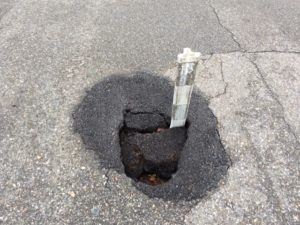  … and your foot and, if it keeps growing, your dog, child, small automobile. Walking in Memphis is always entertaining and exciting, especially if you like to spot potential torts. … and your foot and, if it keeps growing, your dog, child, small automobile. Walking in Memphis is always entertaining and exciting, especially if you like to spot potential torts.
In fact, according to authentic Chamber of Commerce statistics that I am making up, there are more torts on the streets and sidewalks of Memphis than annual Graceland visitors.
I came across this interesting one taking a walk in Midtown. The hole itself is interesting, sort of like a little sinkhole, but the pole sticking out of it what grabs one’s attention, as well as the bottom of your automobile. As always, questions abound. Were they trying to put a stop sign in the middle of the street?
January 21st, 2017  Thanks to my Swiss friend for this link to a variety of wacky warning signs in Switzerland. The Swiss are very safe people, no doubt about it. Look closely at what this monstrous, overdone barrier and warning contraption is protecting: what looks to be about a four-inch deep road excavation. Thanks to my Swiss friend for this link to a variety of wacky warning signs in Switzerland. The Swiss are very safe people, no doubt about it. Look closely at what this monstrous, overdone barrier and warning contraption is protecting: what looks to be about a four-inch deep road excavation.
Compare the Swiss approach to how we handle this type of hazard in good old Memphis.
–Thanks to Pat Crowell.
December 31st, 2016 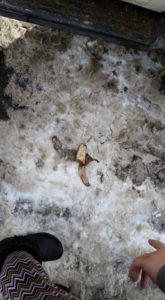 Thanks to a former student at the Florida International University College of Law for spotting this particularly diabolical slip and fall risk. As if ice or banana peels weren’t risk enough by themselves, here we get a combo. Thanks to a former student at the Florida International University College of Law for spotting this particularly diabolical slip and fall risk. As if ice or banana peels weren’t risk enough by themselves, here we get a combo.
Slip and falls are no laughing matter. According to OSHA, they cause 15 percent of all workplace deaths.
Ice is a lot more dangerous than banana peels, but people do slip on banana peels, and not just in cartoons. One of lawhaha.com’s most visited posts is this death certificate for a poor fellow in Tennessee, noting that shortly before his death, he slipped on a banana peel.
–Thanks to Armando Torres.
April 11th, 2016  Here’s another “rolling tort”; i.e., a dangerous condition on a road or highway. Here’s another “rolling tort”; i.e., a dangerous condition on a road or highway.
We look at these things lightly at Lawhaha.com, but large objects that come loose from a vehicle present a substantial risk of injury or death to those traveling behind.
Other examples of Rolling Torts are here, here, and here. Or just sift through the entries under “Spot the Tort.”
–Thanks to Larry Peters.
October 23rd, 2015 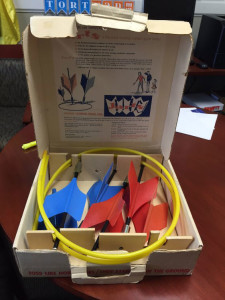 [Great News. The Torts Museum accepted my invitation. My lawn darts will be safely displayed in the museum’s “Dangerous Toys” section.] [Great News. The Torts Museum accepted my invitation. My lawn darts will be safely displayed in the museum’s “Dangerous Toys” section.]
When I first heard the news about Ralph Nader’s new American Museum of Tort Law, my first thought was, “Awesome! A Torts Museum.” My second thought was, “My lawn darts! They belong there.”
In case you missed the news, the Torts Museum opened last month in Nader’s home town in Winsted, CN. The museum offers a history of American tort law, with exhibits covering everything from the infamous McDonald’s hot coffee case to the even more infamous Ford Pinto exploding gas tank fiasco.
I bought my lawn darts about twenty years ago at a garage sale. Never used. No dirt or even bloodstains. Pristine. I knew it would be selfish for me to keep enjoying them, like hiding a Rembrandt in a private studio.
Lawn darts were banned by the Consumer Product Safety Commission in 1988 on the basis that their risk outweighed their social usefulness. The Commission reported three deaths associated with lawn darts from 1970-1988 and an estimated 700 annual emergency room cases. Then-Commissioner Anne Graham explained the Commission’s risk-utility analysis (which my current first-year students will recognize as Judge Hand’s famous formula for negligence):
What limited recreational value lawn darts may have is far outweighed by the number of serious injuries and unnecessary deaths. This week another child was severely injured by a lawn dart. She is now in critical condition. There are numerous alternatives to lawn darts, and I would urge adults who have lawn darts to throw them away now.
The most amazing aspect of my set of Jarts is that the packaging doesn’t include a single warning.
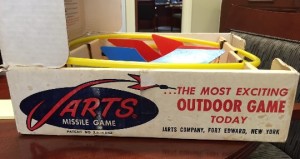 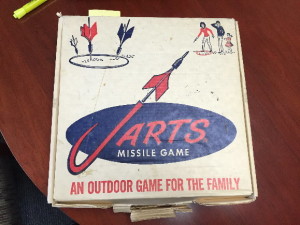 To the contrary, it touts lawn darts as “The Most Exciting Outdoor Game Today.” No doubt. Nothing like a screaming ambulance to liven up the neighborhood. To the contrary, it touts lawn darts as “The Most Exciting Outdoor Game Today.” No doubt. Nothing like a screaming ambulance to liven up the neighborhood.
Best of all, it was a game for the whole family, except … oops, that missile on the cover appears headed straight for mom!
The Consumer Product Safety Commission’s original notice of the ban “urge[d] consumers to discard or destroy all lawn darts immediately” and instructed them to call the Commission’s hotline if they find any still for sale.
August 29th, 2015 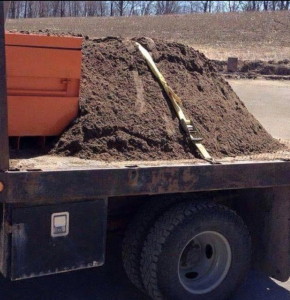 Some of the worst “Rolling Torts,” as we call them here at Lawhaha.com, involve folks negligently failing to secure objects being transported on the backs or tops of their cars or trucks. Some of the worst “Rolling Torts,” as we call them here at Lawhaha.com, involve folks negligently failing to secure objects being transported on the backs or tops of their cars or trucks.
Not sure whether to give the driver of this truck credit for at least trying to secure this huge loose pile of dirt or demerits for not trying quite hard enough.
Other examples of Rolling Torts are here, here, and here.
February 9th, 2015 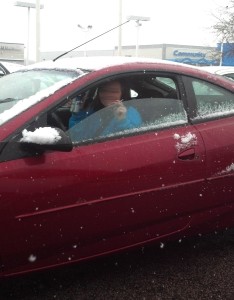 Courtesy of a law student at St. Thomas law school in Minneapolis comes this drinking, phone-talking, smoking driver and proud tortfeasor. As the student explained: Courtesy of a law student at St. Thomas law school in Minneapolis comes this drinking, phone-talking, smoking driver and proud tortfeasor. As the student explained:
Here’s a potential tort for you. I’m a law student at University of St. Thomas (Minneapolis). While driving through Iowa, I spotted a girl drinking a beer, smoking a cigarette and talking on the phone. When she saw me taking a picture, she even posed for me.
The ultimate in driving multitasking.
June 10th, 2014  What Lawhaha.com calls “Rollin’ Torts” are so common they probably deserve their own subcategory in “Spot the Tort.” As will no doubt be defined in the next edition of the Oxford Dictionary, “Rollin’ Torts” are vehicles moving down the highway carrying items too big and/or unsecured to be moved safely in that fashion or by that vehicle. They are, literally, accidents waiting to happen. What Lawhaha.com calls “Rollin’ Torts” are so common they probably deserve their own subcategory in “Spot the Tort.” As will no doubt be defined in the next edition of the Oxford Dictionary, “Rollin’ Torts” are vehicles moving down the highway carrying items too big and/or unsecured to be moved safely in that fashion or by that vehicle. They are, literally, accidents waiting to happen.
Here, we have another great (meaning outrageously bad) example–in the pouring rain no less–courtesy of a 3L law student who, along with all her classmates, I taught to play “Spot the Tort” as a 1L.
–Thanks to Jessica Wargo.
January 26th, 2014  I count at least six kids climbing on this dinosaur, one about to climb on, and maybe more if the dinosaur extends to those kids at the back, all in contravention of the warning sign: I count at least six kids climbing on this dinosaur, one about to climb on, and maybe more if the dinosaur extends to those kids at the back, all in contravention of the warning sign:
PARENTS: Do not let Children Play or Climb on top of Dinosaur
The warning is emphatic and seems pretty clear, although perhaps the kid inside the mouth could hire Suzy Spikes to make a persuasive textualist argument that she is not technically “on top” of the dinosaur.
Looks like they need a second sign: “PARENTS: Read the sign that says to keep your kids off the dinosaur.”
I join the sender in asking why “Children” and “Play” are capitalized. (“Dinosaur” makes sense. More like a proper noun, as in “Bye, Dinosaur! We had fun playing and climbing on you.”)
–Thanks to Heath Waddingham.
December 29th, 2013 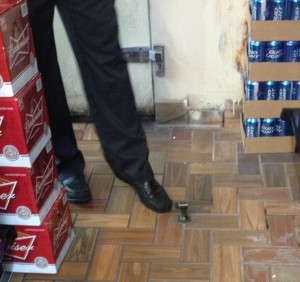 Lawhaha.com friend and South Florida resident Amy Holland is always on the look out to make the world a safer place. Here’s her latest effort: Lawhaha.com friend and South Florida resident Amy Holland is always on the look out to make the world a safer place. Here’s her latest effort:
Here’s a good spot-the-tort photo for you. We were at a liquor store, and as we were (separately) browsing the aisles, we each tripped over this object in the floor. Thankfully, neither of us was seriously injured, but tripping and stubbing a toe on this thing sure does hurt!
The object, which appears to be a doorstop, is made of heavy metal and anchored to the floor with concrete. I have no idea why someone would place a doorstop in the middle of the floor (as opposed to near the wall). The object is difficult to see given its small size, but the worst part is that it is located near the end of the aisle and centered between two shelves, one of which is full of glass bottles. Because of its location, when a customer (or an invitee, rather) comes around the corner to enter this aisle, he or she will likely trip over the object before it ever comes into his or her field of vision.
Of course, I alerted the manager about the risk, and told him that he should immediately put up a caution sign or hazard cone as a temporary solution, and then have the object removed. He said he would have it removed ASAP, so I went back to the little store last night just to see if anything had been done (okay, okay, so I wanted a glass of wine, too), and as soon as I walked in, the owner/manager said, “Watch out, the doorstop is still there! I am having it fixed, though, I swear!”
About two minutes later, a guy approached the manager as we were standing there chatting, and guess what—he was there to remove the doorstop! The owner/manager was obviously serious (and diligent) about fulfilling his promise, and I thought, good for him!
Way to go, Amy!
–Thanks to Amy Holland
December 29th, 2013 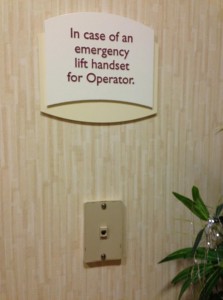 Long distance information, give me … ANYONE! Long distance information, give me … ANYONE!
Can you spot the potentially tortious risk?
Contrary to Murphy’s Law, most things in life usually go right when it comes to risk and injury. Except in Tortland where the worst that can happen always does.
Picture a guest with an emergency, maybe a heart attack or a criminal attack. They reach for the emergency phone as instructed and … oops. No phone.
Easy fix: just take down the sign. No legal duty exists to provide an emergency phone in most situations, but one can assume a duty under tort law that would not otherwise exist by undertaking to render a service that people rely on and then performing it without reasonable care (i.e., negligently).
–Thanks to Pam Hatchell.
August 13th, 2013 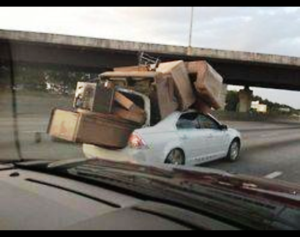 Overloaded vehicles, which we call “Rolling Torts,” are popular submissions on Lawhaha.com as shown here, here and here. Overloaded vehicles, which we call “Rolling Torts,” are popular submissions on Lawhaha.com as shown here, here and here.
But if a contest were held, this one would have to take the prize.
–Thanks to Jill Magill.
April 23rd, 2013 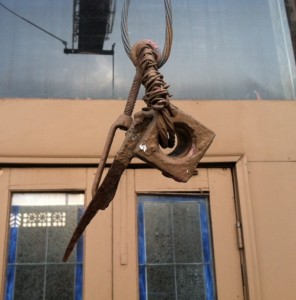 There are potential torts and there are POTENTIAL TORTS. This hanging rusty spike stands out even on the gritty, tort-filled streets and sidewalks of downtown Memphis. As you can see in the second picture, it’s hanging at a level where a person could walk right into it. There are potential torts and there are POTENTIAL TORTS. This hanging rusty spike stands out even on the gritty, tort-filled streets and sidewalks of downtown Memphis. As you can see in the second picture, it’s hanging at a level where a person could walk right into it.
I snapped this shot on my way to the annual law review banquet a week ago and was surprised to see it still hanging yesterday on my way back from lunch.
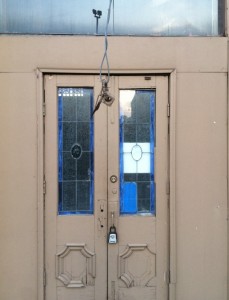 The headline reference, of course, is to a line from the Rolling Stone’s Jumpin’ Jack Flash. The headline reference, of course, is to a line from the Rolling Stone’s Jumpin’ Jack Flash.
April 16th, 2013 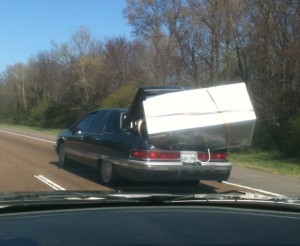 You think this is bad, you should see how the guy tried to move his living room. Not the furniture, the entire room. You think this is bad, you should see how the guy tried to move his living room. Not the furniture, the entire room.
Why waste money on a delivery charge just to save a few million in accident costs?
–Thanks to Tommy Rogers
February 11th, 2013 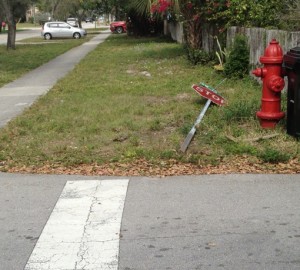 Spotting torts, as we like to do here at Lawhaha.com, has its benefits as a pastime, but maybe a new “Fix the Tort” category should be added to “Spot the Tort.” After all, reducing risk, not just identifying it, should be the ultimate goal. Spotting torts, as we like to do here at Lawhaha.com, has its benefits as a pastime, but maybe a new “Fix the Tort” category should be added to “Spot the Tort.” After all, reducing risk, not just identifying it, should be the ultimate goal.
From sunny South Florida comes this picture of a downed stopped sign which, amazingly, the sender reported was fixed the same day it went down. Good job, city workers.
November 12th, 2012 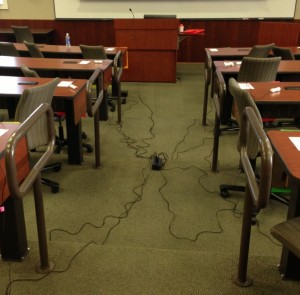 Law schools, filled as they are with lawyers and law students, are pretty safe places, but they sometimes present their own dangerous premises issues, as here in a University of Memphis classroom where students were trying out some new technology that has not reached the wireless stage. The result: a spider web of trip and fall possibilities. Thanks to Rachel Cade. Law schools, filled as they are with lawyers and law students, are pretty safe places, but they sometimes present their own dangerous premises issues, as here in a University of Memphis classroom where students were trying out some new technology that has not reached the wireless stage. The result: a spider web of trip and fall possibilities. Thanks to Rachel Cade.
October 16th, 2012 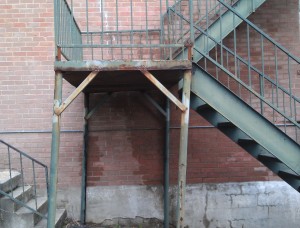 You thought “Risk” was a good game? Spotting risk is even more fun, and definitely more educational. As law students learn in Torts, the world is a dangerous place where the worst that can happen often does. You thought “Risk” was a good game? Spotting risk is even more fun, and definitely more educational. As law students learn in Torts, the world is a dangerous place where the worst that can happen often does.
My 1Ls at the University of Memphis have been participating in a “Spot the Tort” Contest. Check out their photo entries. This is just one sample of the “accidents waiting to happen” they’ve documented in and around Memphis.
September 21st, 2012 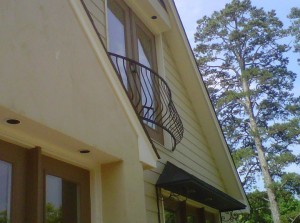 “I am just a nowhere man, falling into nowhere land, stepping through the balcony doors to nowhere.” “I am just a nowhere man, falling into nowhere land, stepping through the balcony doors to nowhere.”
With apologies to the Beatles, that’s the tune that came to mind on receiving this picture of a second floor balcony with nowhere to go but down at a resort at Pickwick Lake in Tennessee.
The submitter said the doors open inward. While the railing no doubt helps, the open space at the bottom is still a tort waiting to happen.
August 26th, 2012  From a University of Memphis law student comes this photo of a treacherous, spiral staircase that looks like it would be a perfect set piece for a low-budget version of a Harry Potter movie. The student said the whole staircase, not just the railing, “wobbles all the way down.” From a University of Memphis law student comes this photo of a treacherous, spiral staircase that looks like it would be a perfect set piece for a low-budget version of a Harry Potter movie. The student said the whole staircase, not just the railing, “wobbles all the way down.”
Spooky. And dangerous.
Seriously. Stairs, like ladders and any other place a person can fall from height, can be extremely perilous. One recent study found that 931,886 children under five were treated in emergency rooms for stair-related injuries from 1999 through 2008, averaging 93,189 injuries per year.
Speaking of Hogwarts Torts …
May 31st, 2012 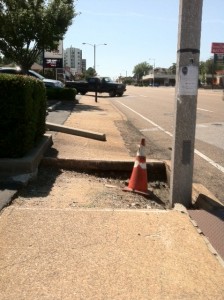 When paint is not enough, add a warning cone, but do not, under any circumstances, consider actually repairing the dangerous condition. Good news! Well, kind of, sort of. Visitors might recall the treacherous sidewalk abyss adjacent to a busy Memphis street that I regularly walk on. The first attempted fix was to spray orange paint around the edge.
But maybe someone broke their leg despite that aggressive risk-reducing measure, because now the city has a new fix: an orange cone! Cement apparently is still not being considered.
But, oops, we also have a new problem a couple yards farther down: a curb stone in the middle of the sidewalk.
May 11th, 2012  When Marc Cohn sang, “Walkin’ in Memphis, walkin’ with my feet ten feet off of Beale,” he may have been giving risk avoidance advice. When Marc Cohn sang, “Walkin’ in Memphis, walkin’ with my feet ten feet off of Beale,” he may have been giving risk avoidance advice.
Good old Memphis, a streets-and-sidewalks tort mecca.
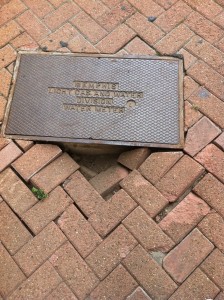 These photos were taken a couple blocks from Beale Street in downtown Memphis. These photos were taken a couple blocks from Beale Street in downtown Memphis.
Walk a hundred steps, spot a tort. Walk another hundred steps, spot a tort. And so on.
May 4th, 2012 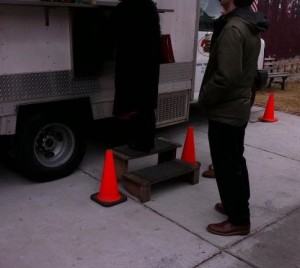 A student snapped this photo of a food vending truck in Memphis, where a customer is perched precariously on some portable steps placing an order. The steps should be both longer and wider for stability and to avoid missteps and missed steps. On the other hand, give the vendor credit for the safety cones. A student snapped this photo of a food vending truck in Memphis, where a customer is perched precariously on some portable steps placing an order. The steps should be both longer and wider for stability and to avoid missteps and missed steps. On the other hand, give the vendor credit for the safety cones.
March 9th, 2012 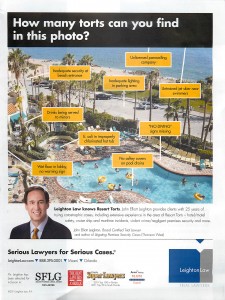 Dang, should have trademarked, “Spot the Tort,” the family friendly game of risk reduction. A former student at the Florida International University College of Law sent along this amusing law firm advertisement. (Click to expand.) Dang, should have trademarked, “Spot the Tort,” the family friendly game of risk reduction. A former student at the Florida International University College of Law sent along this amusing law firm advertisement. (Click to expand.)
February 18th, 2012 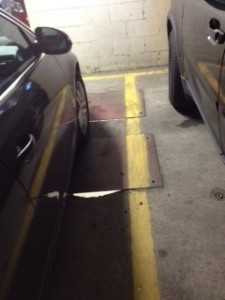 A first-year University of Memphis law student sent along this picture from the parking garage where most students park. The picture came as a follow-up to our class discussion in Torts II of the use of exculpatory clauses by, among others, parking garages. A first-year University of Memphis law student sent along this picture from the parking garage where most students park. The picture came as a follow-up to our class discussion in Torts II of the use of exculpatory clauses by, among others, parking garages.
Exculpatory clauses–which invariably appear on the back of tickets customers receive when they enter a parking garage–operate to relieve negligent actors of liability. Exculpatory clauses generally will be upheld if clearly written, so long as they do not pertain to an essential public service, such as medical care or education. Courts are split on whether parking garages qualify as essential public service within this rule.
Here the student pointed to two large holes in the concrete on one of the upper-levels where someone has attached, with small fasteners, thin sheets of metal as covers (that’s light shining from the floor below). She noted that “part of the one hole is still exposed where someone’s foot could fall through,” but said it made her even more nervous to think that large cars were depending on the thin sheets for support.
January 27th, 2012 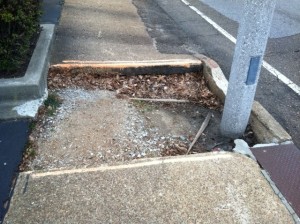 Taking a walk near my house in Memphis, I encountered this dangerous sidewalk condition. Taking a walk near my house in Memphis, I encountered this dangerous sidewalk condition.
Note that instead of filling in the chasm, the city apparently opted to leave it be and cure the problem instead by spray-painting a thin orange warning line around it.
Since the condition has been there for a quite a while (the orange paint is very faded), it appears this was considered to be an acceptable final fix.
January 26th, 2012  Okay, not quite the stairway to heaven, but this long ladder could give the user a good head start. (All pics are expandable.) This picture from a University of Memphis law student makes me shudder. Okay, not quite the stairway to heaven, but this long ladder could give the user a good head start. (All pics are expandable.) This picture from a University of Memphis law student makes me shudder.
Ladders are one of the most dangerous consumer products. A study published by the U.S. National Institutes of Health estimated that 2.2 million people received treatment in emergency rooms for ladder injuries during the 16-year-period from 1990-2005, an average of 136,000 cases a year.
Nearly 10% of injuries resulted in hospitalization, roughly twice that of consumer product-related injuries overall.
Other ladder injury data from the study included:
- Men predominated over women in the percentage of injuries (76.5%).
- Fractures were the most common type of injury (31.5%).
- The number of ladder-related injuries increased by more than 50% from 1990 to 2005.
- Of the cases for which locale of injury was recorded, 97.3% occurred in non-occupational settings, such as homes and farms.
Don’t underestimate the risks of ladders. Did you know that extension ladders need to be set up at a 75 and 1/2 degree angle (the “4 to 1 rule”) to minimize the risk of slipping?
December 30th, 2011  A University of Memphis law student snapped this shot of someone trying to move way too many wood palletes in the back of a pickup truck, apparently unsecured. A University of Memphis law student snapped this shot of someone trying to move way too many wood palletes in the back of a pickup truck, apparently unsecured.
December 25th, 2011 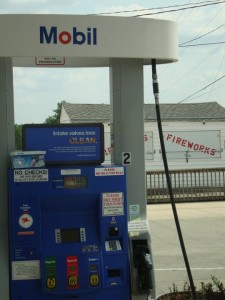 “Let’s see, where should we build the dangerous fireworks retail outlet?” “Let’s see, where should we build the dangerous fireworks retail outlet?”
“How about right here next to these dangerous gasoline pumps?”
“Perfect!”
University of Memphis law student Ella Hernandez caught this funny juxtaposition on a Florida vacation. (Click on the pic to expand and fully appreciate.)
This picture has the makings of a classic Torts exam question. Just throw in some lightning and a school bus careening out of control.
December 25th, 2011 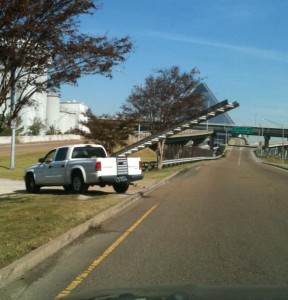 Taken in downtown Memphis, with the Pyramid building in the background. Taken in downtown Memphis, with the Pyramid building in the background.
I guess one of those little yellow flags at the end might help (and may required by law), but that ladder still looks too long to be taking a ride in such a short truck.
Wonder what’s holding it down inside the truck. Whatever it is, leverage is working against it.
December 20th, 2011 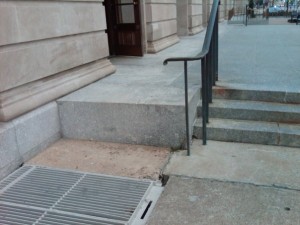 In 2010, the University of Memphis law school changed locations, moving from the main university campus to the magnificent, beautifully restored ($42 million worth) U.S. Customs House downtown on the Mississippi River. In 2010, the University of Memphis law school changed locations, moving from the main university campus to the magnificent, beautifully restored ($42 million worth) U.S. Customs House downtown on the Mississippi River.
The building is incredible, but as with any new gigantic construction project, quite a few punch-list items remained. Immediately, students started spotting and reporting dangerous premises conditions, which were forwarded to the administration.
This particular condition comprised significant drop-offs without barriers on both sides of the main entry doors.
 The administration must have agreed it was dangerous because the concrete planters were in place within two days. The administration must have agreed it was dangerous because the concrete planters were in place within two days.
Good fix! The drop-offs were not easily visible even in daylight as you can see in the second picture.
December 19th, 2011 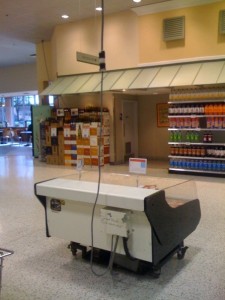 Spot the Tort isn’t just for lawyers and law students. A layperson was shocked (not literally, fortunately) to find this high-voltage electrical danger smack in the middle of an Atlanta grocery store. Spot the Tort isn’t just for lawyers and law students. A layperson was shocked (not literally, fortunately) to find this high-voltage electrical danger smack in the middle of an Atlanta grocery store.
Note to store: Your hidden warning on the back will not protect you from tort liability with regard to your “business invitee” customers. A business invitor has a duty to make the premises reasonably safe for invitees. Sometimes a warning may suffice, but only it if allows customers to negotiate the premises safely.
A lot of negligence questions are murky with no reliable answers, but I feel comfortable predicting that a judge or jury would consider placing these exposed high voltage cables in a place where children often wander freely to constitute an unreasonable risk.
 Ironically, getting close enough to read this warning actually increases the risk. Ironically, getting close enough to read this warning actually increases the risk.
December 1st, 2011 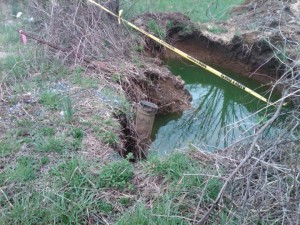 … 50 yards from a preschool. … 50 yards from a preschool.
University of Memphis law student Leighann Ness sent this picture of a water-filled hole a stone’s throw away from the Nashville preschool attended by her daughter.
Meanwhile, while awaiting corrective action, we can all rest easy that this ribbon of yellow tape will effectively protect nearby toddlers and others.
Leighann reported that her non-lawyer husband is the one who actually spotted the problem. As I always say, Spot the Tort is a game for the whole family.
November 7th, 2011  Thanks to Duncan Young, a childhood friend from back in South Florida, for this pic of a dangerous pedestrian/jogger/pet/bike rider/car-absorbing death-trap on a Ft. Lauderdale street where the grate is missing. Thanks to Duncan Young, a childhood friend from back in South Florida, for this pic of a dangerous pedestrian/jogger/pet/bike rider/car-absorbing death-trap on a Ft. Lauderdale street where the grate is missing.
As a good citizen (and police chief of a neighboring community), he reported it. The next time he drove by a new grate had been installed.
No way to know whether the quick corrective action occurred because: (1) Duncan is a police chief of a neighboring community; (2) the city has genuine concern for its citizens; or (3) the city has genuine concerns about being sued.
|
Funny Law School Stories
For all its terror and tedium, law school can be a hilarious place. Everyone has a funny law school story. What’s your story?
|
Product Warning Labels
A variety of warning labels, some good, some silly and some just really odd. If you come encounter a funny or interesting product warning label, please send it along.
|
Tortland

Tortland collects interesting tort cases, warning labels, and photos of potential torts. Raise risk awareness. Play "Spot the Tort." |
Weird Patents
Think it’s really hard to get a patent? Think again.
|
Legal Oddities
From the simply curious to the downright bizarre, a collection of amusing law-related artifacts.
|
Spot the Tort
Have fun and make the world a safer place. Send in pictures of dangerous conditions you stumble upon (figuratively only, we hope) out there in Tortland.
|
Legal Education
Collecting any and all amusing tidbits related to legal education.
|
Harmless Error
McClurg's twisted legal humor column ran for more than four years
in the American Bar Association Journal.
|
|
|
 At lawhaha.com, we love what we call “rolling torts,” also known as “accidents waiting to happen.” A rolling tort consists of an effort to move large objects via a vehicle in a way that creates an unreasonable danger to other motorists.
At lawhaha.com, we love what we call “rolling torts,” also known as “accidents waiting to happen.” A rolling tort consists of an effort to move large objects via a vehicle in a way that creates an unreasonable danger to other motorists.



 I’m no expert, but I think the caution tape is supposed go around the hazard, not beneath. And could you at least point the long rusty nails in the pedestrians’ direct path down?
I’m no expert, but I think the caution tape is supposed go around the hazard, not beneath. And could you at least point the long rusty nails in the pedestrians’ direct path down?











































